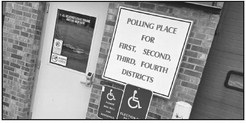Public employers must adapt to remote working needs


The times are changing when it comes to defining where, when and how people are at work. Municipalities, counties, schools and other government employers need to adapt to those changes and not let personalities or political agendas cloud workforce management decisions.
The trend toward working remotely has been slowly gaining ground across the country for some time. This shift has been fueled by a combination of increasingly accessible technology and demographic changes. The COVID-19 pandemic has sped up the process dramatically with companies shutting in-person offices as a way to promote social distancing.
Some of these major employers have found closing physical offices and shifting to working remotely has led to increased worker productivity and real cost savings. Over the weekend the Wisconsin Public Service Commission announced plans to permanently close its Green Bay offices and instead have its 450 employees work remotely.
As any business owner knows, there are significant overhead costs in maintaining a physical space including such things as utilities, repairs and property taxes. Reducing these overhead expenses without compromising the quality of the work being done is a goal any manager should embrace. A remote working environment also offers additional flexibility to recruiting efforts, with geographic location of less importance. Technology has made it possible to have the big city job without having to live in the big city.
The shift has been slower in rural Wisconsin where the majority of workers remain front-line service or traditional blue collar. While the workers on the manufacturing floor will always need to be on-site to do their jobs, the same cannot be said for those in the administrative offices or in the sales division. A study by economists at the University of Chicago estimated that up to 37% of jobs in the United States could plausibly be done from home. A team of economists in Norway went a step further, breaking it down by job category. That study shows that while only 21% of skilled craft jobs are plausible to be done from home, 67% of clerical support jobs could be done from home along with 43% of technicians and associate professionals.
The benefits of working remotely can also be applied to public sector jobs. The major challenge for public employers is to ensure that the work of serving the public is not being negatively impacted by allowing remote working. The heavily-touted roadblock of needing to maintain network security is largely overblown. Firm policies governing how equipment may be used coupled with appropriate software and network infrastructure can quickly address many security concerns. Fortunately, these solutions are already available in the private sector and are easily adaptable to government.
The major hurdle for government employers, and the elected officials who are the stewards of taxpayer resources, is in recognizing that working remotely is still working. Ensuring that the work is getting done and people are accountable for the jobs they were hired to do falls on the shoulder of departmental managers. There will always be employees who abuse opportunities to work from home. It will be up to direct supervisors and management to deal with these issues as they would with any personnel issue. There also must be clearly-defined expectations as far as work schedule, availability and output.
Public employers must be willing to embrace workplace changes that will see a greater focus on results from workers rather than staffing offices.




